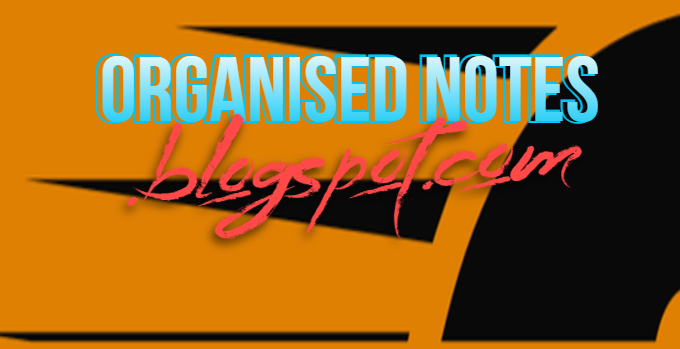.Match List-I with List-II
| List-I | List-II |
| (a) Filariasis | (i) Haemophilus influenzae |
| (b) Amoebiasis | (ii) Trichophyton |
| (c) Pneumonia | (iii) Wuchereria bancrofti |
| (d) Ringworm | (iv) Entamoeba histolytica |
Choose the correct answer from the options given below.
| (a) | (b) | (c) | (d) | |
| 1. | (i) | (ii) | (iv) | (iii) |
| 2. | (ii) | (iii) | (i) | (iv) |
| 3. | (iv) | (i) | (iii) | (ii) |
| 4. | (iii) | (iv) | (i) | (ii) |
.
.
Answer ▽ ✅Verified
4.(iii)(iv)(i)(ii)
A detailed solution :
Tricho-
Filaria
Haemop-
Entamoeba
⬆️Prev____@organised notes_____Next⬇️
.Match the following columns and select the correct option :
Column - I Column - II
(i) Typhoid (a) Haemophilus influenzae
(ii) Malaria (b) Wuchereria bancrofti
(iii) Pneumonia (c) Plasmodium vivax
(iv) Filariasis (d) Salmonella typhi
1. (i)-(d), (ii)-(c), (iii)-(a), (iv)-(b)
2. (i)-(c), (ii)-(d), (iii)-(b), (iv)-(a)
3. (i)-(a), (ii)-(c), (iii)-(b), (iv)-(d)
4. (i)-(a), (ii)-(b), (iii)-(d), (iv)-(c)
.
.
Answer ▽ ✅Verified
1. (i)-(d), (ii)-(c), (iii)-(a), (iv)-(b)
Filaria
Malaria
Haemop-
Typhoid
⬆️Prev____@organised notes_____Next⬇️
.Asthma may be attributed to
1. allergic reaction of the mast cells in the lungs2. inflammation of the trachea
3. accumulation of fluid in the lungs
4. bacterial infection of the lungs
.
.
Answer ▽ ✅Verified
1. allergic reaction of the mast cells in the lungs
Inflammation
⬆️Prev____@organised notes_____Next⬇️
.Which of the following immunoglobulins does constitute the largest percentage in human milk? NEET 2015
1. IgD
2. IgM
3. IgA
4. IgG
.Colostrum, the yellowish fluid, secreted by mother during the initial days of lactation is very essential to impart immunity to the newborn infants because it contains: NEET 2019
1. Immunoglobulin A
2. Natural killer cells
3. Monocytes
4. Macrophages
.The yellowish fluid "colostrum" secreted by mammary glands of the mother during the initial days of lactation has abundant antibodies (IgA) to protect the infant. This type of immunity is called as : NEET 2021
1. Passive immunity
2. Active immunity
3. Acquired immunity
4. Autoimmunity
Answer ▽ ✅Verified
⬆️Prev____@organised notes_____Next⬇️
.HIV that causes AIDS, first starts destroying
2. leucocytes
3. helper T-lymphocytes
4. thrombocytes
.
.
Answer ▽ ✅Verified
3. helper T-lymphocytes
HIV
Macrophage
⬆️Prev____@organised notes_____Next⬇️
.Which is the particular type of drug that is obtained from the plant whose one flowering
branch is shown below?
1. Hallucinogen
2. Depressant
3. Stimulant
4. Pain-killer
.
.
Answer ▽ ✅Verified
1. Hallucinogen
⬆️Prev____@organised notes_____Next⬇️
.Motile zygote of Plasmodium occurs in
1. gut of female Anopheles
2. salivary glands of Anopheles
3. human RBCs
4. human liver
.
.
Answer ▽ ✅Verified
1. gut of female Anopheles
100% NCERT covered from Particular Keyword.Explanations are 100% from NCERT |
Plasmodium
⬆️Prev____@organised notes_____Next⬇️
.Widal test is carried out to test
1. malaria
2. diabetes mellitus
3. HIV/AIDS
4. typhoid fever
.
.
Answer ▽ ✅Verified
4. typhoid fever
Test
⬆️Prev____@organised notes_____Next⬇️
.Which one of the following acts as a physiological barrier to the entry of microorganisms
in human body?
1. Tears
2. Monocytes
3. Skin
4. Epithelium of urogenital tract
.
.
Answer ▽ ✅Verified
1. Tears
Innate Immunity
Innate immunity is non-specific type of defence, that is present at the
time of birth. This is accomplished by providing different types of barriers
to the entry of the foreign agents into our body. Innate immunity consist
of four types of barriers. These are —
(i) Physical barriers : Skin on our body is the main barrier which
prevents entry of the micro-organisms. Mucus coating of the
epithelium lining the respiratory, gastrointestinal and urogenital
tracts also help in trapping microbes entering our body.
(ii) Physiological barriers : Acid in the stomach, saliva in the mouth,
tears from eyes–all prevent microbial growth.
(iii) Cellular barriers : Certain types of leukocytes (WBC) of our body
like polymorpho-nuclear leukocytes (PMNL-neutrophils) and
monocytes and natural killer (type of lymphocytes) in the blood as
well as macrophages in tissues can phagocytose and destroy
microbes.
(iv) Cytokine barriers : Virus-infected cells secrete proteins called
interferons which protect non-infected cells from further viral
infection.
⬆️Prev____@organised notes_____Next⬇️
.Select the correct statement from the ones given below
1. Barbiturates when given to criminals make them tell the truth
2. Morphine is often given to persons who have under gone surgery as a pain killer
3. Chewing tobacco lowers blood pressure and heart rate
4. Cocaine is given to patients after surgery as it stimulates recovery
.
.
Answer ▽ ✅Verified
2. Morphine is often given to persons who have under gone surgery as a pain killer
⬆️Prev____@organised notes_____Next⬇️
.Which one of the following is the correct statement regarding the particular psychotropic
drug specified?
1. Hashish causes alter thought perceptions and hallucinations
2. Opium stimulates nervous system and causes hallucinations
3. Morphine leads to delusions and disturbed emotions
4. Barbiturates cause relaxation and temporary euphoria
.
.
Answer ▽ ✅Verified
1. Hashish causes alter thought perceptions and hallucinations
⬆️Prev____@organised notes_____Next⬇️




